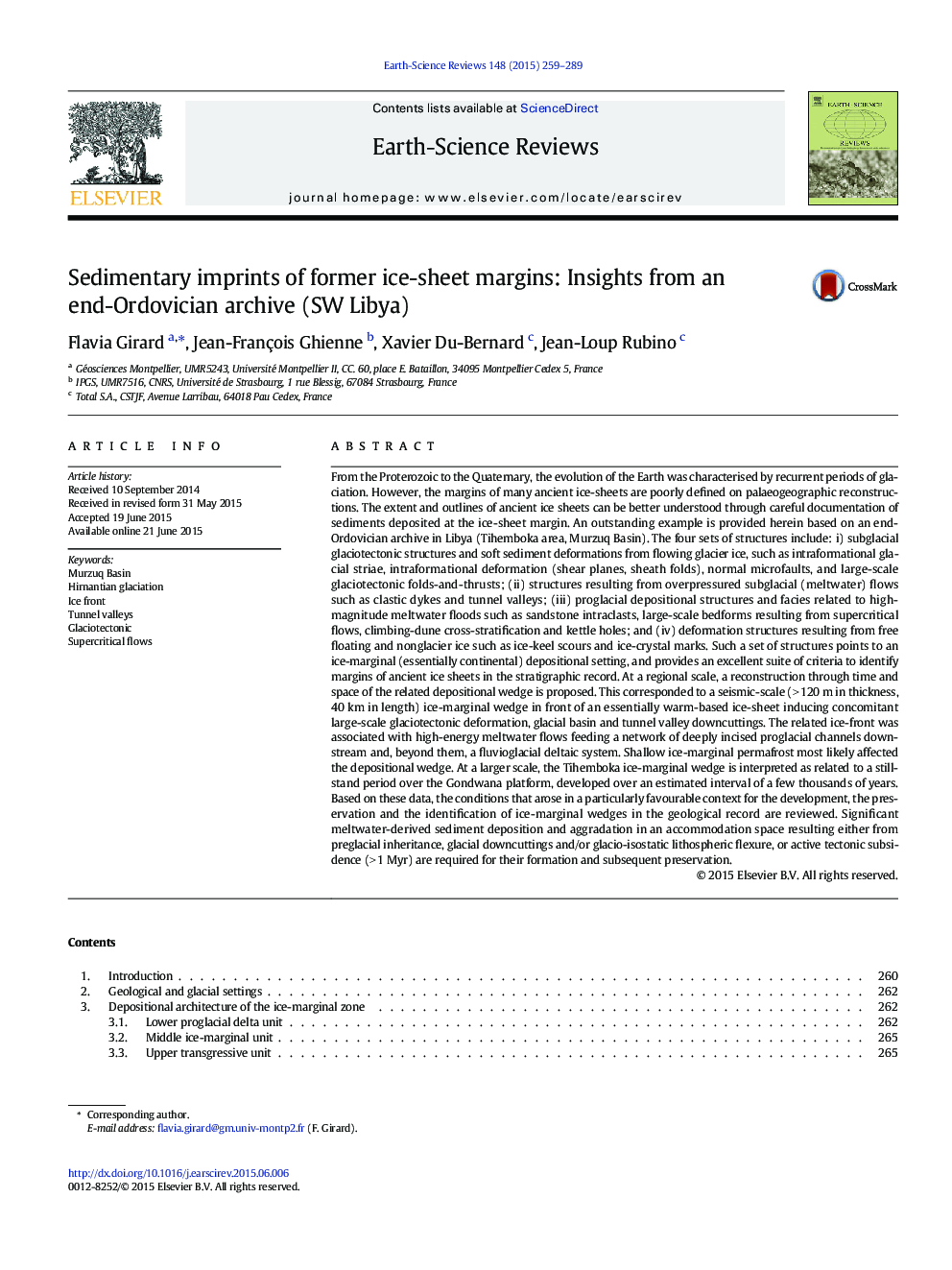| کد مقاله | کد نشریه | سال انتشار | مقاله انگلیسی | نسخه تمام متن |
|---|---|---|---|---|
| 4725654 | 1639954 | 2015 | 31 صفحه PDF | دانلود رایگان |

From the Proterozoic to the Quaternary, the evolution of the Earth was characterised by recurrent periods of glaciation. However, the margins of many ancient ice-sheets are poorly defined on palaeogeographic reconstructions. The extent and outlines of ancient ice sheets can be better understood through careful documentation of sediments deposited at the ice-sheet margin. An outstanding example is provided herein based on an end-Ordovician archive in Libya (Tihemboka area, Murzuq Basin). The four sets of structures include: i) subglacial glaciotectonic structures and soft sediment deformations from flowing glacier ice, such as intraformational glacial striae, intraformational deformation (shear planes, sheath folds), normal microfaults, and large-scale glaciotectonic folds-and-thrusts; (ii) structures resulting from overpressured subglacial (meltwater) flows such as clastic dykes and tunnel valleys; (iii) proglacial depositional structures and facies related to high-magnitude meltwater floods such as sandstone intraclasts, large-scale bedforms resulting from supercritical flows, climbing-dune cross-stratification and kettle holes; and (iv) deformation structures resulting from free floating and nonglacier ice such as ice-keel scours and ice-crystal marks. Such a set of structures points to an ice-marginal (essentially continental) depositional setting, and provides an excellent suite of criteria to identify margins of ancient ice sheets in the stratigraphic record. At a regional scale, a reconstruction through time and space of the related depositional wedge is proposed. This corresponded to a seismic-scale (> 120 m in thickness, 40 km in length) ice-marginal wedge in front of an essentially warm-based ice-sheet inducing concomitant large-scale glaciotectonic deformation, glacial basin and tunnel valley downcuttings. The related ice-front was associated with high-energy meltwater flows feeding a network of deeply incised proglacial channels downstream and, beyond them, a fluvioglacial deltaic system. Shallow ice-marginal permafrost most likely affected the depositional wedge. At a larger scale, the Tihemboka ice-marginal wedge is interpreted as related to a still-stand period over the Gondwana platform, developed over an estimated interval of a few thousands of years. Based on these data, the conditions that arose in a particularly favourable context for the development, the preservation and the identification of ice-marginal wedges in the geological record are reviewed. Significant meltwater-derived sediment deposition and aggradation in an accommodation space resulting either from preglacial inheritance, glacial downcuttings and/or glacio-isostatic lithospheric flexure, or active tectonic subsidence (> 1 Myr) are required for their formation and subsequent preservation.
Journal: Earth-Science Reviews - Volume 148, September 2015, Pages 259–289